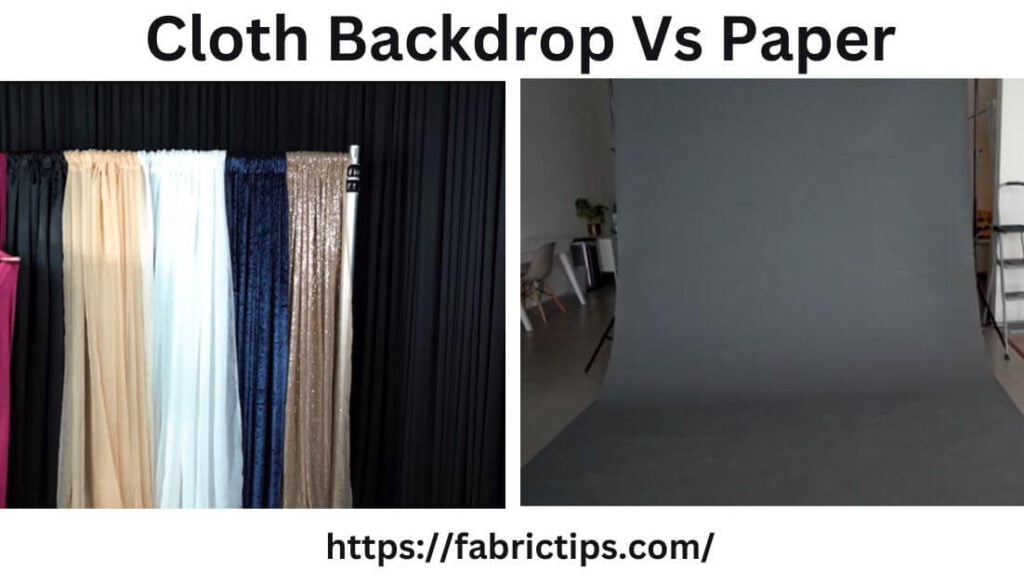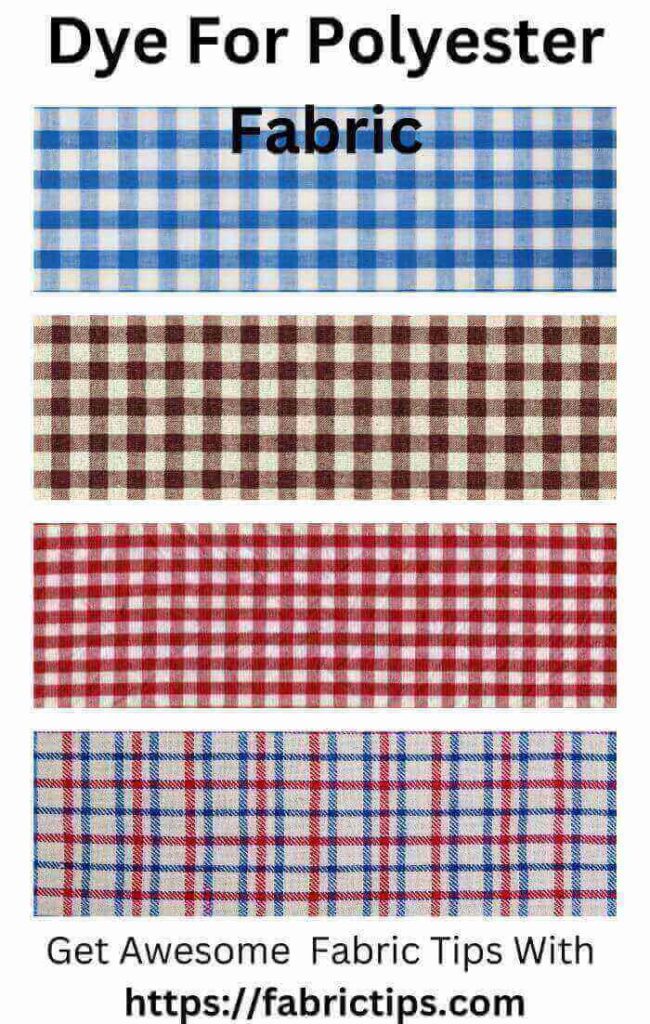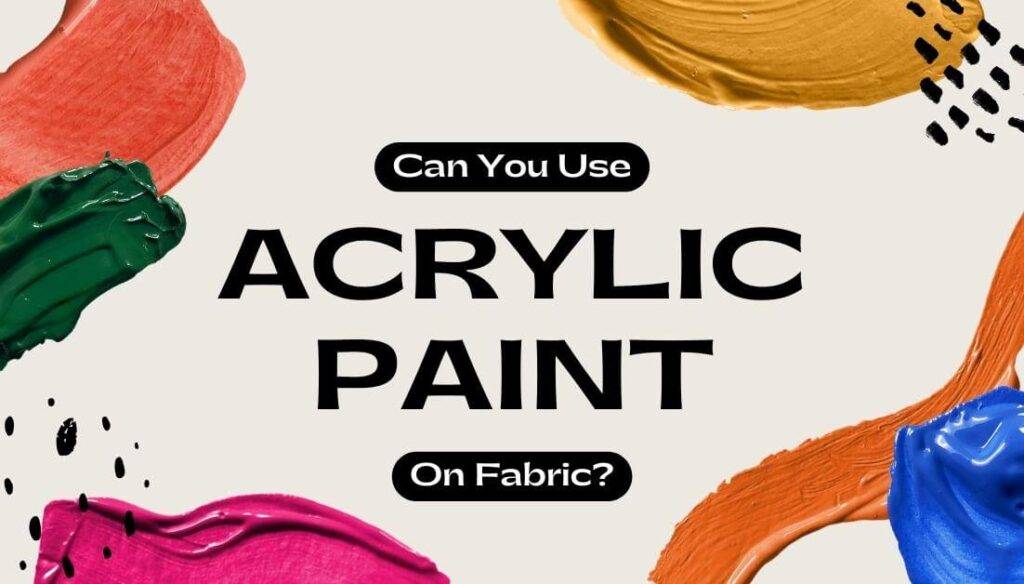Last Updated on December 13, 2025 by Wahid
The right backdrop can transform your photos, setting the scene, controlling light, & adding a touch of creative flair. This guide explored the two main contenders: cloth and paper backdrops.
Paper backdrops shine with their affordability and ease of use, making them ideal for beginners or photographers on a budget. They excel at creating clean, minimalist backgrounds, perfect for product photography. However, their limited variety & single-use nature can be drawbacks.
Cloth backdrops counter with remarkable versatility. They offer a vast array of colors, textures, and patterns, allowing you to achieve a wide range of aesthetics. Their reusability makes them a cost-effective choice in the long run, & the ability to manipulate light with different fabrics expands your creative potential. However, they require more setup with ironing or steaming.
The ultimate winner? In both these scenarios, the unsung hero is the backdrop. It’s more than just a pretty background; it’s a powerful tool that sets the scene, controls light, & allows you to unleash your creative vision. But when it comes to choosing the right backdrop, you might find yourself at a crossroads: cloth backdrop vs paper? The ideal backdrop depends on your specific needs. Consider your:
- Budget
- Desired look & feel
- Shooting style
Do you crave creative freedom and a professional look? Cloth backdrops might be your champion. Prioritize speed and affordability? Paper backdrops could be your perfect match.
This guide dives deep into the world of cloth & paper backdrops, unpacking their strengths and weaknesses to help you make an informed decision. Let’s get started & transform your photos from ordinary to extraordinary!
Backdrop Bonanza: Cloth vs. Paper

The backdrop is a photographer’s canvas, a blank slate ready to be transformed into a world of creative possibilities. But within this realm, two primary contenders vie for your attention: cloth and paper backdrops.
Cloth Backdrops: Crafted from various fabrics like muslin, canvas, or polyester, cloth backdrops offer a wealth of textures, colors, and patterns. They’re the chameleons of the photography studio, adapting seamlessly to different genres – from the soft, diffused light of a portrait session to the bold, vibrant energy of a product shoot.
Paper Backdrops: On the other hand, paper backdrops, most commonly known as seamless paper, prioritize simplicity. They come in a variety of solid colors, offering a smooth, clean surface ideal for creating minimalist backgrounds. Hence, paper backdrops are renowned for their affordability and ease of use, making them a popular choice for beginners.
Now, let’s delve into the undeniable advantages of incorporating backdrops into your photography arsenal:
- Versatility Unbound: Backdrops liberate you from the constraints of your shooting location. Imagine transporting your model to a lush Parisian street scene or a sun-drenched beach, all within the confines of your studio.
- Aesthetic Control: Backdrops empower you to curate the mood & atmosphere of your photo. A textured muslin backdrop adds a timeless elegance to portraits, while a bold, colored paper backdrop injects a burst of energy into product shots.
- Professional Polish: Backdrops instantly elevate the production value of your photos. They replace distracting backgrounds with a clean, controlled aesthetic, conveying a sense of professionalism and polish.
Cloth Backdrop vs. Paper Backdrop: Comparison Chart
Choosing the right backdrop hinges on understanding the strengths and weaknesses of each contender. Here’s a breakdown to help you make an informed decision:
| Feature | Cloth Backdrop | Paper Backdrop |
| Material: | Muslin, canvas, polyester, etc. | Paper |
| Variety: | Wide range of colors, textures, & patterns | Limited colors & patterns, mostly solid |
| Durability: | More durable, washable, reusable | Less durable, single-use (may have some reusability) |
| Setup: | Requires ironing/steaming for wrinkles | Quick and easy to set up |
| Storage: | Folds or rolls for compact storage | Requires a roll holder or careful storage for rolls |
| Light Control: | Can absorb or diffuse light depending on material | Can be reflective, requires separate light control |
| Cost: | Generally more expensive than paper backdrops | Less expensive |
| Pros: | Versatile (textures, colors, patterns) | Affordable, easy to set up |
| Cons: | Requires maintenance (wrinkles) | Limited variety, less durable |
Look at Different Cloth Backdrops

Cloth backdrops mesmerize photographers with their versatility & ability to transform a scene. But within the world of fabric, various materials each offer unique advantages:
- Muslin: The undisputed workhorse of cloth backdrops, muslin is an affordable, lightweight fabric available in a vast array of colors. Its natural weave creates a soft, diffused light, making it ideal for portraiture & product photography. However, muslin wrinkles easily, requiring ironing or steaming before use.
- Canvas: This heavyweight fabric boasts a distinct textured surface that adds depth and dimension to your photos. Canvas backdrops are incredibly durable & perfect for high-traffic studios or frequent shoots. While they provide excellent light absorption, their weight & rigidity can make them a less portable option.
- Polyesters: If you’re a globetrotting photographer, wrinkle-resistant polyesters are your saving grace. These lightweight fabrics hold their shape beautifully, making them ideal for travel photography or on-location shoots. However, some polyesters can have a slight sheen, which might not be suitable for all photography styles.
Beyond the Big 3 Cloth Backdrops:
The world of cloth backdrops extends beyond these popular choices. Let’s explore some additional options:
- Cotton: Similar to muslin in terms of light diffusion, cotton backdrops offer a slightly smoother texture and a more natural look. However, cotton wrinkles more easily than muslin & might require more frequent maintenance.
- Velvet: Luxuriate in the richness of velvet backdrops. This opulent fabric adds a dramatic touch to portraits, creating depth & a sense of sophistication. Keep in mind that velvet can be quite reflective, requiring careful light control.
- Vinyl: For a water-resistant and easily cleanable option, vinyl backdrops are a great choice. They come in a wide variety of printed designs, perfect for creating specific settings or themes. However, vinyl can create a more artificial look compared to other fabrics.
Remember, the ideal cloth backdrop ultimately depends on your specific needs & shooting style. Then, consider factors like portability, desired texture, light control, and of course, your budget to make the perfect choice for your creative vision.
Look at Different Paper Backdrops

While cloth backdrops reign supreme in versatility, paper backdrops offer a compelling counterpoint. Let’s delve into the different types of paper backdrops available:
- Seamless Paper: The undisputed champion of paper backdrops, seamless paper boasts a smooth, unblemished surface ideal for creating clean, minimalist backgrounds. Available in a wide range of solid colors, these paper rolls allow you to achieve precise color control for your shots. Here’s the catch: seamless paper is a single-use product, although some photographers might be able to salvage small sections for future use.
- Muslin Paper: This innovative option bridges the gap between cloth backdrop and paper backdrops. Muslin paper offers a textured surface that mimics the look of muslin fabric, adding a touch of visual interest to your backgrounds. It’s a more affordable alternative to true muslin backdrops and retains the single-use nature of traditional paper backdrops.
- Pre-Printed Paper: Inject instant ambiance into your photos with pre-printed paper backdrops. These backdrops come in a vast array of themes, from classic brick walls and rustic wood textures to whimsical holiday scenes and fantastical landscapes. Pre-printed paper backdrops simplify your setup process but are inherently limited in terms of customization & reusability.
Mastering the Backdrop: Tips, Tricks, and a Buyer’s Guide
Now that you’re armed with knowledge about cloth and paper backdrops. Thus, let’s explore some practical tips to help you choose the perfect one for your photography journey.
Choosing Your Backdrop Champion:
- Budget Blues: Paper backdrops are your wallet’s best friend. However, if you factor in long-term use, cloth backdrops offer better value due to their reusability.
- Desired Look: Craving a clean, minimalist background? Paper backdrops are your go-to. Do you yearn for a textured, classic look? Embrace the versatility of cloth backdrops.
- Shooting Style: Photographing portraits or products that require soft light diffusion. Muslin backdrops are a great choice. For on-location shoots or frequent travel, wrinkle-resistant polyesters might be your savior.
Cloth Backdrop Ironing & Steaming Tips
Wrinkles in your cloth backdrop can be an eyesore. Here’s how to keep your fabric backdrops looking smooth and pristine:
- Ironing: Set your iron to a low or medium heat setting suitable for the fabric type. Always iron on the backside of the backdrop to avoid scorching the material. Use a pressing cloth for added protection.
- Steaming: For a gentler approach, use a garment steamer held at a safe distance from the fabric. Steam in a sweeping motion to avoid leaving water marks.
Hanging & Securing Your Backdrops:
- Cloth Backdrops: Use backdrop stands with clamps to secure the fabric tautly. For a more relaxed look, drape the fabric over a sturdy backdrop support system.
- Paper Backdrops: Invest in a paper backdrop holder that allows you to unroll & secure the paper as needed. You can also use clamps or tape to adhere the paper to a wall or sturdy surface.
Bonus Tip: DIY Backdrop Magic
Feeling crafty? Unleash your inner artist and create your own DIY backdrops. Paint a large canvas or sheet with your desired color or pattern. Use fabric dyes to create unique textures on muslin fabric. Explore online tutorials for inspiration and unleash your creative spirit!
Finally, by employing these tips and carefully considering your needs, you’ll be well on your way to selecting the perfect backdrop that elevates your photography to new heights.
Cloth Backdrop Vs Paper Backdrop: Unveiling the Champions
Selecting the perfect backdrop is a crucial step in creating captivating photos. But with two main contenders – cloth and paper – the decision can leave you pondering. Fear not, photography enthusiasts! This comprehensive guide delves into the strengths & weaknesses of both cloth and paper backdrops, helping you choose the ideal option to elevate your photographic artistry.
Budget:
- Paper Backdrops: The budget-friendly champion! Paper backdrops boast a lower upfront cost, making them a fantastic choice for beginners or photographers working with limited resources.
- Cloth Backdrops: While the initial cost might be higher, cloth backdrops transform into a more cost-effective option in the long run. Their reusability allows you to recoup your investment over time.
Variety:
- Cloth Backdrops: The undisputed king of variety! Cloth backdrops offer a vast and vibrant kingdom of colors, textures, and patterns. From the soft, light-diffusing embrace of muslin to the bold, textured landscapes of canvas, you can find a fabric that perfectly complements your shooting style and desired aesthetic.
- Paper Backdrops: While paper backdrops offer a decent selection of solid colors, their realm is limited in terms of variety. Some pre-printed options exist, but they lack the creative versatility of cloth backdrops.
Ease of Set-Up:
- Paper Backdrops: The champion of speed and convenience! Paper backdrops excel in quick & easy setups. Simply unroll the paper and secure it to a backdrop holder or wall. No ironing or steaming required – perfect for those fast-paced shoots where time is of the essence.
- Cloth Backdrops: Cloth backdrops typically require more preparation than paper. Muslin backdrops, for example, might need ironing or steaming to remove wrinkles. However, with practice, the process can become streamlined, allowing for a smooth workflow.
Availability:
- Cloth and Paper Backdrops: This is a tie! Both options are readily available from online retailers and camera stores, making them easy to find and purchase.
Durability:
- Cloth Backdrops: The undisputed champion of longevity! Cloth backdrops are significantly more durable than their paper counterparts. They can be washed, ironed, and reused many times, making them a great investment for photographers who shoot frequently.
- Paper Backdrops: Paper backdrops are generally single-use, although some photographers might be able to salvage small sections for future projects. Their delicate nature makes them less suitable for frequent shoots or rough handling.
Storage Space:
- Cloth Backdrops: Cloth backdrops can be folded or rolled up for compact storage, taking up less space than large paper rolls. Depending on the fabric, some wrinkles might appear, but these can be easily addressed with ironing or steaming.
- Paper Backdrops: Storage space can be a concern with paper backdrops. Smaller backdrops can be stored rolled up, but larger rolls require a dedicated storage solution or a dedicated holder to prevent wrinkles.
Quality of Shots:
- Both Backdrops: Both paper and cloth backdrops can produce high-quality photos. Paper backdrops excel at creating clean, minimalist backgrounds, perfect for product photography where a simple, distraction-free backdrop is desired.
- Cloth Backdrops: However, cloth backdrops, particularly those with textures, can add depth and dimension to your photos, creating a more professional & finished look. The ability to manipulate light with different fabric choices further expands your creative possibilities.
So, Who Wins the Backdrop Battle?
There’s no single “best” option! The ideal backdrop depends on your specific needs and budget. Here’s a quick breakdown to help you decide:
- Choose Paper Backdrops if:
- You’re a beginner on a tight budget.
- You prioritize quick and easy setups for fast-paced shoots.
- You need clean, minimalist backgrounds for product photography.
- Choose Cloth Backdrops if:
- You want a wider variety of colors, textures, and patterns.
- You value durability and reusability for long-term cost-effectiveness.
- You desire a more professional, finished look with the ability to manipulate light.
Ultimately, the best way to choose is to experiment with both options & see which one aligns best with your workflow and creative vision. Remember, you can always invest in both. Paper backdrops are fantastic for specific situations, while cloth backdrops offer long-lasting versatility. Happy shooting!
FAQs
Here are some of the most common questions people ask about cloth and paper backdrops on Google, Reddit, Quora, and other discussion forums:
Q-1: Which backdrop is cheaper, cloth or paper?
Answer: Paper backdrops are generally cheaper initially. However, cloth backdrops are more reusable, making them more cost-effective in the long run.
Q-2: How much do cloth backdrops cost?
Answer: Cloth backdrops can range in price depending on the size, material, and quality. You can find basic muslin backdrops for around $20, while larger canvas backdrops can cost upwards of $100.
Q-3: Can I reuse paper backdrops?
Answer: Paper backdrops are typically single-use. You might be able to salvage small sections for future projects, but extensive reuse isn’t recommended.
Q-4: What colors and patterns do cloth backdrops come in?
Answer: Cloth backdrops come in a vast array of colors, textures, and patterns. You can find solid colors, muslins with a soft light-diffusing texture, canvas with a bold, textured look, and even backdrops with printed designs.
Q-5: What are paper backdrops good for?
Answer: Paper backdrops are ideal for photographers who need clean, minimalist backgrounds. They’re popular for product photography and situations where a simple, distraction-free backdrop is desired.
Q-6: Can I use a cloth backdrop for portraits?
Answer: Absolutely! Cloth backdrops are a great choice for portraits. The variety of colors, textures, and patterns allows you to create different moods and aesthetics in your photos.
Q-7: Which backdrop is easier to set up, cloth or paper?
Answer: Paper backdrops are much easier to set up. Simply unroll the paper and secure it to a backdrop holder or wall.
Q-8: How do I care for a cloth backdrop?
Answer: You can wash most cloth backdrops to remove wrinkles and dirt. Muslin backdrops often need ironing or steaming to achieve a smooth surface.
Q-9: How do I store cloth backdrops?
Answer: Cloth backdrops can be folded or rolled up for compact storage. Depending on the fabric, some wrinkles might appear, but these can be easily addressed with ironing or steaming.
Q-10: How do I store paper backdrops?
Answer: Smaller paper backdrops can be stored rolled up and take up minimal space. However, larger rolls require a dedicated storage solution or a dedicated holder to prevent wrinkles.
Q-11: Can I use fabric instead of a cloth backdrop?
Answer: Yes! You can use any large piece of fabric as a backdrop. Consider using bed sheets, curtains, or even fabric you buy by the yard. Just make sure the fabric is wrinkle-resistant or that you’re prepared to iron or steam it.
Conclusion: Choosing Your Perfect Canvas (Cloth Backdrop vs Paper)
The battle between cloth backdrop vs paper isn’t about a clear winner, but rather about the champion that best suits your photographic goals. This guide has equipped you with the knowledge to make an informed decision.
Consider your photography journey:
- Budget-conscious beginner? Paper backdrops offer affordability and ease of use.
- Craving creative freedom and a professional aesthetic? Cloth backdrops provide a wider variety and reusability for long-term value.
Remember:
- Think about your shooting style: Do you prioritize speed or a more crafted look?
- Evaluate your desired outcome: Clean minimalism or textured depth?
The perfect backdrop awaits! Explore online retailers or camera stores to discover the cloth or paper option that elevates your photography to new heights. With the right backdrop and your creative vision, stunning photos are just a click away. Happy shooting!


